Modulation of the hypermetabolic response to trauma: temperature, nutrition, and drugs
- PMID: 19476781
- PMCID: PMC3775552
- DOI: 10.1016/j.jamcollsurg.2009.01.022
Modulation of the hypermetabolic response to trauma: temperature, nutrition, and drugs
Figures
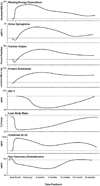
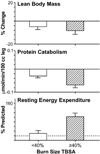

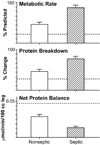


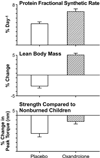
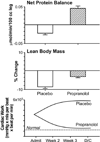

Similar articles
-
Metabolic and Endocrine Considerations After Burn Injury.Clin Plast Surg. 2017 Jul;44(3):541-553. doi: 10.1016/j.cps.2017.02.013. Epub 2017 Apr 21. Clin Plast Surg. 2017. PMID: 28576243 Review.
-
Effect of recombinant human growth hormone on catabolic hormones and free fatty acids following thermal injury.J Trauma. 1992 Jun;32(6):698-702; discussion 702-3. J Trauma. 1992. PMID: 1613829 Clinical Trial.
-
Nutrition and metabolism following thermal injury.Clin Plast Surg. 1974 Oct;1(4):603-19. Clin Plast Surg. 1974. PMID: 4154156 Review. No abstract available.
-
Altering metabolism.J Burn Care Rehabil. 2005 May-Jun;26(3):194-9. J Burn Care Rehabil. 2005. PMID: 15879740 Review.
-
Modulation of the post-burn hypermetabolic state.Nestle Nutr Workshop Ser Clin Perform Programme. 2003;8:39-49; discussion 49-56. doi: 10.1159/000072747. Nestle Nutr Workshop Ser Clin Perform Programme. 2003. PMID: 12968447 Review. No abstract available.
Cited by
-
Enteral nutrition support in burn care: a review of current recommendations as instituted in the Ross Tilley Burn Centre.Nutrients. 2012 Oct 29;4(11):1554-65. doi: 10.3390/nu4111554. Nutrients. 2012. PMID: 23201833 Free PMC article. Review.
-
An Overview of Recent Developments in the Management of Burn Injuries.Int J Mol Sci. 2023 Nov 15;24(22):16357. doi: 10.3390/ijms242216357. Int J Mol Sci. 2023. PMID: 38003548 Free PMC article. Review.
-
Management of pain in children with burns.Int J Pediatr. 2010;2010:825657. doi: 10.1155/2010/825657. Epub 2010 Sep 16. Int J Pediatr. 2010. PMID: 20885937 Free PMC article.
-
Acellular Hydrogels for Regenerative Burn Wound Healing: Translation from a Porcine Model.J Invest Dermatol. 2015 Oct;135(10):2519-2529. doi: 10.1038/jid.2015.182. Epub 2015 May 8. J Invest Dermatol. 2015. PMID: 26358387 Free PMC article.
-
Sex-Based Differences in Inpatient Burn Mortality.World J Surg. 2019 Dec;43(12):3035-3043. doi: 10.1007/s00268-019-05165-x. World J Surg. 2019. PMID: 31511940 Free PMC article.
References
-
- Hart DW, Wolf SE, Mlcak R, et al. Persistence of muscle catabolism after severe burn. Surgery. 2000;128:312–319. - PubMed
-
- Rutan RL, Herndon DN. Growth delay in postburn pediatric patients. Arch Surg. 1990;125:392–395. - PubMed
-
- Yu YM, Tompkins RG, Ryan CM, Young VR. The metabolic basis of the increase of the increase in energy expenditure in severely burned patients. JPEN J Parenter Enteral Nutr. 1999;23:160–168. - PubMed
Publication types
MeSH terms
Substances
Grants and funding
LinkOut - more resources
Full Text Sources
Other Literature Sources
Medical

